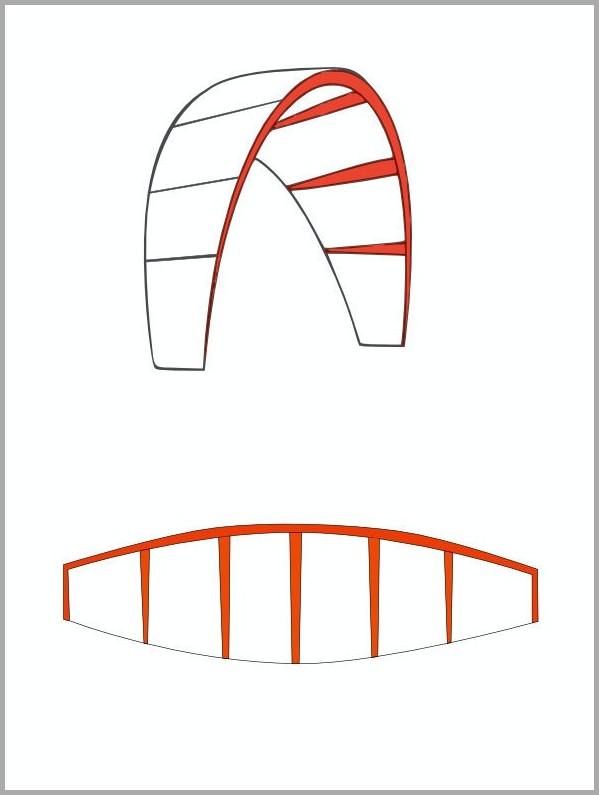
What are the different types of kitesurfing kites
A kite is a kind of kitesurfing sail, similar in some ways to a parachute. Without it you can't do this sport — you just can't fly anywhere. And, just like in many other sports, kites come in many types.
There are two main types of kites: tube kites and parafoils. They are fundamentally different in design and the possibilities of their use.
Let's understand in this article the different kitesurfing kite types.
Foil kites or parafoils
A foil kite looks like a parachute or wing. Its canopy doesn’t have a rigid frame, so the shape is maintained by the oncoming air flow, which enters through special air intakes. In closed-type parafoils, these air intakes are closed by valves — because of them the parafoil is ‘afraid of the water’. If it falls, water can get into the valves and the kite will lose its flight properties.
A parafoil is lightweight and compact, more durable, and frost resistant. But it’s more difficult to control and less stable under strong gusts. Choose a foil kite for snowkiting, high-speed rides, for riding only in light wind (less than 5 m/s) or only at air temperatures below -20 ° С.
If you are planning to use the kite for riding on water, choose an inflatable one.

Tube kites or leading edge inflatable kites
The frame of such a kite is created by inflatable balloons, which are located along the leading edge of the wing and across it. Inflatable kites don’t sink, are easily restarted from water, have a wide wind range, and are well controlled in gusts. It is better to start and land such a kite from the shore with a partner, because hitting the surface too hard may rupture the balloons or bubble.
In addition, today there are several basic types of inflatable kites:
C-kites
C-kites have an arched dome profile and rectangular ‘ears’ — similar to the letter C. C-kites are characterized by fast dome turns, high thrust, and narrow wind range, and are difficult to restart from water. This kite type is suitable for experienced kiteboarders and is designed for freestyle. It’s not suitable for beginners, nor is it used for freeriding or racing.

Bow-kites or SLE-kites
It got its name from its ‘flat’ dome with a larger working area. They have a wide wind range and a high level of safety. Bow kites are easier to restart than C-kites and have better thrust release. Suitable for beginner kitesurfers.

Hybrid kites
Hybrid kites have the advantage of bow kites and intuitive C-kite handling. These kites are sure to have a support leading-edge (SLE), a C-arch, a high level of safety, and a good restart. This kite type is suitable for confident kiteboarders and is designed for freeride, freestyle, and wave riding.
Delta kites
Seen from above, they look like the letter D. Delta kites are characterized by easy restarting, steady behavior, and wide wind range. This kite type is intended for freeriding, but it can also be used for practicing the initial freestyle tricks. Great for beginner kiters for training.

Learn more about how to read the surf / swell forecast in a special Windy.app presentation with examples and tips from professional surfers with many years of experience of riding the biggest and best waves on the planet.
Text: Natalia Kirasheva
Cover photo: peggy-anke / unsplash
You will also like
10 best spots for kitesurfing worldwide
10 spots where you can kite all year round
A brief guide to kiteboarding for beginners
Latest News
Professional Weather App
Get a detailed online 10 day weather forecast, live worldwide wind map and local weather reports from the most accurate weather models.
Compare spot conditions, ask locals in the app chat, discover meteo lessons, and share your experience in our Windy.app Community.
Be sure with Windy.app.



